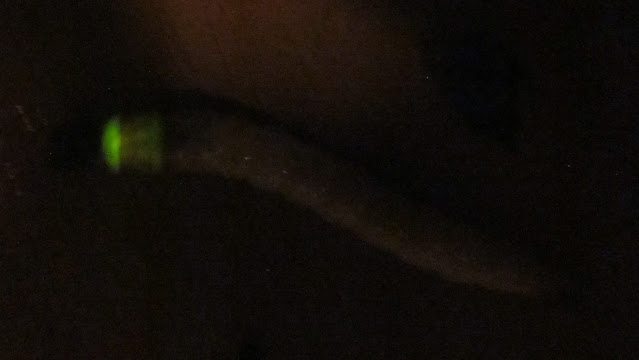I'd come to the conclusion based on past experiences that a sudden rise in heat is what induces larvae of this species to pupate prematurely... So I isolated half of them into a warm area in my collection (rather than the room temps I'd been keeping them at), and waited. However, to my surprise, none of them pupated, but rather I had some larvae from the COOL group start pupating... 🤔😂
Now, those larvae I was keeping "cool" had actually been kept around 70-74F°, but I then moved them to an even cooler spot in the mid to high 60s for some reason or another. After that a couple of them started pupating. Then, seeing that none of my larvae from the warm group were pupating, I moved those back to the cool area along with the others, and not too long after I did that, two of the ones that were previously being kept warm started making pupal cells too.
SO, I think the premature pupation DOES have to do with temperature fluctuations, but rather than temperature rises doing it, I actually think a temperature DROP is what causes them to pupate prematurely. Same difference TBH, larvae being kept cool, subjected to higher heat for a few days or so at a time only to be dropped back down to cooler temps can obviously induce pupation. So a temperature rise can be partially responsible lol, it's just that if you kept them warm consistently from there on out, they're gonna just keep on growing to full size. 😂
Anyways, as far as mature individuals go I've got three adults now, plus two pre-pupal larvae. Should definitely be enough to get another generation going this year, and be able to distribute them to interested parties somewhat soon. 😁
Anyways, here are some pictures of my new adults:
Man I love this species, really hope I can get more from this genus in the future!
Next up, updates on my US Native Pyrophorini. I've got a total of 14 holdbacks of Deilelater physoderus, and most of the larvae are quite large now. Two of them pupated slightly prematurely, they're a decent size for this species but not completely full grown, however by some miraculous stroke of luck they ended up being a sexed pair. 😂 So that's pretty awesome, the female has already exhibited egg laying behavior and I will likelihood start seeing larvae pop up in the next month or so.
Here are some pictures of a large larva, and the new adult pair:
 |
| Larva |
 |
| Adult female |
 |
| Adult female glowing |
 |
| Adult male |
 |
| Adult male glowing |
So glad these are doing well for me, and I hope to make CB larvae of this species publicly available for the first time ever soon! 😁
Compared to my other Pyrophorini, my Deilelater cf. atlanticus are doing rather poorly... I've got 7 larvae left, I've had a couple odd die offs and I'm not sure why. On top of this their growth seems to have halted despite consistent feedings, and overall they just don't seem to be thriving. Their growth rates are a bit staggered too, so I'll be lucky to get a pair to mature out of these IMO... I think part of this may have to do with them preferring live/prekilled invert prey to dog food. So, I'm offering them Teneb larvae from here on out, we'll see how they do.
Lastly, an update on my Ignelater haveniensis. I've not been feeding these very consistently, so their growth has been rather slow. However I'm changing that now, and so far at least half of them have already reached or are near the inch long mark already. 😄 I've got 16 larvae total, with one more possibly living in one of my springtail/slime mold jars (don't ask lol).
Here are some pics of a couple of the larger larvae, I was actually able to get a picture and video of one of them glowing too:
 |
| Larva glowing |
I love how even larval Pyrophorini can glow, supposedly eggs can too but I will NEVER catch that on camera or probably even see it in person lol. 😂
Anyways, that's gonna do it for this post, thanks for reading, hope everyone enjoyed, stay safe, stay buggy, and I'll see you all next time! 😉









































No comments:
Post a Comment